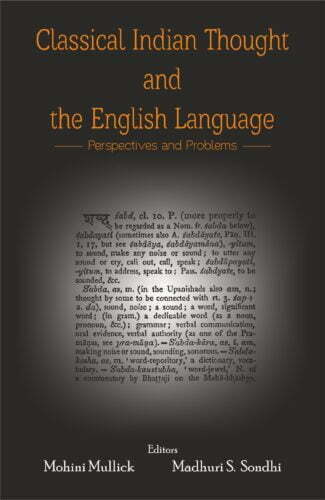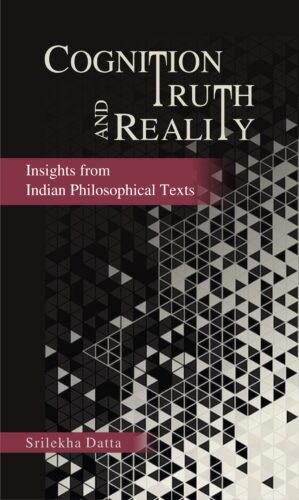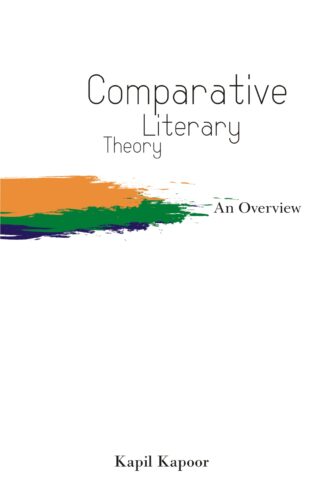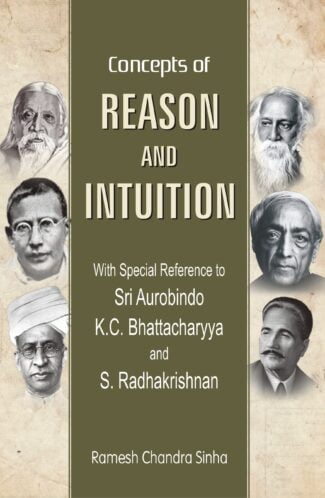Showing 157–168 of 1182 results

The book vividly presents, analyses and critiques the varied facets of Indian aesthetics, especially the theory and technique of classical Indian dance, while doing a penetrating study of interrelationship that dancing has with literature, sculpture and music. In doing so, the book surveys and analyses the contribution of all great Sanskrit authors, theoreticians, playwrights of ancient and classical India along with the works many Bhāṣā scholars of arts, aesthetics and literature.
This volume is the result of many years of painstaking research in a field, which had been neglected by art historians, and thus presenting an idealistic view of the whole tradition of Indian art and aesthetics. This definitive work on the inherent interrelationship of the Indian arts is a path-breaking endeavour, treading into a domain which no one had explored. For that to happen, the author has delved deep into enormous mass of literature on the subject and has also surveyed the portrayal of dance figures in ancient temples. With Dr Kapila Vatsyayan’s profound knowledge of various dance forms as a performing artist of her own standing and having studied the sculptures and artefacts minutely, the book emerges so scholarly emanating the wisdom and know-how of a persona, endowed with the unique combination of a researcher, an art historian and an aesthetician par excellence.
The book vividly presents, analyses and critiques the varied facets of Indian aesthetics, especially the theory and technique of classical Indian dance, while doing a penetrating study of interrelationship that dancing has with literature, sculpture and music. In doing so, it surveys and analyses the contribution of great Sanskrit authors, theoreticians, playwrights of ancient and classical India such as Bharata, Bhāsa, Kālidāsa, Śūdraka, Bhavabhūti, Abhinavagupta, Jayadeva and many more along with numerous Bhāṣā scholars of arts, aesthetics and literature, covering each and every nook and corner of the Indian subcontinent.
This highly scholarly work should invoke keen enthusiasm among Sanskritists, art historians, dancers and students of varied art forms alike, and should pave the way for ongoing researches on all the topics covered within its scope.

The book reinterprets some basic concepts of paramanu (atom), samanya (universal), ahamkara (the ego-principle) and karma as understood by the classical Indian philosophical systems the Nyaya-Vaishesikas, Samkhyas and the Buddhists. The articles explore the study of Aristotle’s Mean (Mesotes) and Buddha’s Middle Path (Majjhima Patipada).
Classical Indian Philosophy Reinterpreted consists of articles written by Victoria Lysenko and Michel Hulin two distinguished scholars of international repute on some basic concepts of classical Indian philosophy such as paramanu (atoms), samanya (universal), ahamkara (ego principle), and karma. These essays address important debates and issues that have arisen centering around Indian philosophical texts. In an essay an attempt has been made to resolve the apparent contradiction between the psychological and cosmic aspects of tattva in the scheme of the Samkhya dualism. One of the major contributions of this volume consists in situating Indian concepts from a comparative perspective as well. A comparative account of Aristotle’s Means (Mesotes) and Buddha’s Middle path (Majjihima Patipada) is illuminating. The notion of Christian reincarnation has also been compared and contrasted with the Indian concept of karma. The karmic principle has been interpreted as a mechanism for retribution and the link between karmic causality and the role of Ayurveda, the classical Indian science of medicine, has been explored and analysed. These essays share a common perspective in looking at philosophy from within the cultural traditions in which it grows. This book will be useful to researchers, academicians and other interested persons. Even a reader who is not familiar with classical Indian philosophical texts can form some idea about the rigour and thoroughness of Indian philosophical approach.

This book brings into focus the problems associated with conveying the central concepts and categories relating to some key areas of Indian classical thought through the well-established lexicons available in English, the language of power. It covers thus Epistemology, Ontology, Aesthetics, Moral Philosophy, Philosophy of Language, Religion and Logic, Political Theory, History, and Culture Theory from India and abroad.
This book is based on the proceedings of a Workshop held in 2011 on Rendering of the Categories of Classical Indian Thought in the English Language: Perspectives and Problems.
Although scientific texts appear to have successfully solved the problem by standardizing technical terms for all languages of instruction and communication, the problem of translation becomes acute when dealing with vocabularies of long standing belonging to ancient cultures, as is the case in India.
More urgently, we know that the thought worlds of ancient and medieval India are still very much alive and with us. Thus to even begin to understand contemporary India and its dilemmas, it is essential to come to grips with the foundational concerns, wisdom and follies of a civilization that has refused to die. What we find, however, is that when it comes to the understanding of our own thought traditions, their rendering into the English language in the colonial (and post-colonial) period, has only served to obscure the great cultural divide between the history of Western thought and our own.
The workshop thus aimed at bringing into focus the problems associated with conveying the central concepts and categories relating to some key areas of Indian classical thought through the well-established lexicons available in English, the language of power.
The multidisciplinary gathering included not only philosophers from the fields of Epistemology, Ontology, Aesthetics, Moral Philosophy, Philosophy of Language, Religion and Logic, but also specialists in the fields of Political Theory, History, and Culture Theory from India and abroad.

The book addresses various fundamental topics of philosophy in the area of epistemology and metaphysics like doubt, memory, perception, truth and validity, the self, consciousness and universals; and these are explored from the perspective of Indian philosophy.
“This book contains a number of essays on various fundamental topics of philosophy in the area of epistemology and metaphysics. Topics like doubt, memory, perception, truth and validity, the self, consciousness and universals are explored from the perspective of Indian philosophy. The discussion here is based on Indian philosophical texts which bear the evidence of analytical mind of the Indian thinkers and their critical approach to the subject. The author has suggested some new interpretation in some cases and offered some alternative solution to certain problems. These essays are the results of the author’s intensive study of the subject. This book will be useful for students and researchers. A survey of the opinions of different schools of philosophy on different topics can be found here and the scope for further research on those areas has also been shown.”

Two centuries of British rule gave English educated Indians a peculiar mindset that tended to undervalue their native ethos and moorings, and make English culture more attractive. This tendency is called colonial syndrome. This book attempts to define and elucidate this syndrome and its ill effects, and suggests means to contain and overcome it.
Two centuries of British rule crystallized in the minds of English educated Indians a peculiar mindset that tended to undervalue their native ethos and moorings, and make English culture more attractive. This tendency is called the colonial syndrome. This syndrome has infected the modern Indian elite, who abandon their cultural roots and imitating the Western ways. This situation has drained them off their intrinsic creative capabilities and rendered them less likely to make any significant original contributions to nation building.
This book, an outcome of Prof. K. Ramakrishna Raos work as a National Fellow of Indian Council of Social Science Research (ICSSR), attempts to define and elucidate this syndrome and its ill effects on the modern Indian mindset, and suggests means to contain and overcome it. It alerts people and the leadership about the negative and cascading effects of colonial syndrome, and pleads for Indianization of education, philosophy and psychology, among others in the country. Mahatma Gandhis concept of svadeÁ is the driving force here. It has no negative attributes, only positive self-assertion for common good.
Colonial Syndrome goes on to analyses Gandhis concept of svadeÁ, and attempts to make clear the difference between education in India and Indian education, Indian philosophy and philosophy in India, and psychology in India and Indian psychology and emphasizes that India had its own unique standing on education, philosophy and psychology which needs to be revived and nurtured for fast social and economic development.

This work highlights the Dharmashastra essentials by listing the major authors with their biographies, titles and their dates of composition, published editions and commentaries. It shows how Dharmashastra works have influenced the Indian way of life.
Dharmashastra is not just a corpus of scriptural texts. It is rather a genre, in its own right, of writings comprising prescriptive codes of righteous conduct in different spheres: whether familial, societal, ritualistic, legal, or even political. For the first time, this book offers a quintessential view of the Dharmashastra (Smriti) literature. Which today, along with its digests and commentaries, looks like a vast reservoir of literary works that have been accumulating over the centuries since their legendary beginnings with Manu. Designed primarily for reference, this Companion is styled and structured to bring forth the Dharmashastra-essentials in the quickest time. Listed here, alphabetically, are the major authors with their biographical sketches. And, these besides, the titles, together with descriptive details of their thematic content, dates/probable dates of their composition, published editions and commentaries their upon. Also included here are as many as 12 appendices which, in their totality, embody Dharmashastra-based information on geography, flora and fauna, mixed castes/tribes, neo-Smriti schools, and the kind of relation Smriti literature has with the Mahabharata, Puranas, and Tantra, among other aspects. Professor Banerjis book not only tries to show how Dharmashastra works are representative of the ancient/medieval political, social and cultural milieus, but is also a painstaking attempt to gauge their influence in conditioning the Indian way of life and psyche. Supported by an extensive glossarial index of Smriti literature, it is indisputably a valued companion to the Dharmashastra-specialists, Indologists and the scholars of ancient/medieval Indian sociology.

This book delves deep into the growth of poetics, theory of literature, literary artefacts, aesthetics of literature as an art form, and dramaturgy and philosophy of literature. Cultures have given forms as their typical expressions for India great epics, for Greece tragedies, and for England lyrics.
“Two cultures of the world — Greek and Indian — have nourished literature. While the contemporary Western thinking is rooted in Greek thought, especially of Socrates, Plato and Aristotle, and percolated down to the modern European languages with the advent of Christian thought, the multilingual Indian literary tradition has its base from the classical Tamil, Pali, Prakrt and Sanskrit.
Though cultural specificity marks these two traditions off from each other, the universal human condition that finds expression in all literatures binds them together. This book delves deep into the growth of poetics, theory of literature, literary artefacts, aesthetics of literature as an art form, and dramaturgy and philosophy of literature.
Cultures have given forms as their typical expressions — for India great epics, for Greece tragedies, and for England lyrics. Similarly, different ages of a culture find expression in different forms — Elizabethan age of England in lyrics, sixteenth-seventeenth centuries in drama, eighteenth century in prose, and nineteenth century in novel. India’s genius is in epics and its expression unfolds in sravya-preksa compositions, being singable poetry as its preferred form.
This book must serve pretty useful for students and teachers of literature. Also, an invaluable collection for researchers in literature.”

This book delves deep into the growth of poetics, theory of literature, literary artefacts, aesthetics of literature as an art form, and dramaturgy and philosophy of literature. Cultures have given forms as their typical expressions for India great epics, for Greece tragedies, and for England lyrics.
“Two cultures of the world — Greek and Indian — have nourished literature. While the contemporary Western thinking is rooted in Greek thought, especially of Socrates, Plato and Aristotle, and percolated down to the modern European languages with the advent of Christian thought, the multilingual Indian literary tradition has its base from the classical Tamil, Pali, Prakrt and Sanskrit.
Though cultural specificity marks these two traditions off from each other, the universal human condition that finds expression in all literatures binds them together. This book delves deep into the growth of poetics, theory of literature, literary artefacts, aesthetics of literature as an art form, and dramaturgy and philosophy of literature.
Cultures have given forms as their typical expressions — for India great epics, for Greece tragedies, and for England lyrics. Similarly, different ages of a culture find expression in different forms — Elizabethan age of England in lyrics, sixteenth-seventeenth centuries in drama, eighteenth century in prose, and nineteenth century in novel. India’s genius is in epics and its expression unfolds in sravya-preksa compositions, being singable poetry as its preferred form.
This book must serve pretty useful for students and teachers of literature. Also, an invaluable collection for researchers in literature.”

This book articulates the philosophical thought of the twentieth-century Indian philosophers Sri Aurobindo, K.C. Bhattacharyya and S. Radhakrishnan. It provides a profound understanding of Reason and Intiution while giving admirable understanding of other important metaphysical and religious problems.
This work is a systematic and critical study of two most important problems of philosophy Reason and Intuition. The philosophical thought of the twentieth-century Indian thinkers articulates fresh ideas. Though they accept the metaphysical doctrines of Vedànta, one finds a good deal of originality in their world-views. The great thinkers are fully aware that unless they interpret and formulate the traditional truths in the modern framework of ideas, they would cease to inspire. There seems to be a distinct change in their views concerning man’s existence in the world.
The book embodies a fresh approach towards critical evaluation of some theories and gives valuable insights. It attempts to make relevant comparisons of the views of Indian thinkers with those of some of the eminent thinkers of the West.
In the detailed study of Sri Aurobindo, K.C. Bhattacharyya and S. Radhakrishnan, the author shows, not only a profound grasp of the concepts of Reason and Intuition, but also the admirable understanding of other important metaphysical and religious problems.
This book cannot miss the sight of students of philosophy, researchers and scholars.

This book articulates the philosophical thought of the twentieth-century Indian philosophers Sri Aurobindo, K.C. Bhattacharyya and S. Radhakrishnan. It provides a profound understanding of Reason and Intiution while giving admirable understanding of other important metaphysical and religious problems.
This work is a systematic and critical study of two most important problems of philosophy Reason and Intuition. The philosophical thought of the twentieth-century Indian thinkers articulates fresh ideas. Though they accept the metaphysical doctrines of Vedànta, one finds a good deal of originality in their world-views. The great thinkers are fully aware that unless they interpret and formulate the traditional truths in the modern framework of ideas, they would cease to inspire. There seems to be a distinct change in their views concerning man’s existence in the world.
The book embodies a fresh approach towards critical evaluation of some theories and gives valuable insights. It attempts to make relevant comparisons of the views of Indian thinkers with those of some of the eminent thinkers of the West.
In the detailed study of Sri Aurobindo, K.C. Bhattacharyya and S. Radhakrishnan, the author shows, not only a profound grasp of the concepts of Reason and Intuition, but also the admirable understanding of other important metaphysical and religious problems.
This book cannot miss the sight of students of philosophy, researchers and scholars.

This dictionary serves as an immediate reference book to the teachers and the students of philosophy and also to the general readers. It covers as many as seventeen hundred entries that include the most commonly used philosophical terms of the East and the West and the brief biographies of prominent philosophers of the Orient as well as the Occident.
This dictionary serves as an immediate reference book to the teachers and the students of philosophy and also to the general readers. It covers as many as seventeen hundred entries that include the most commonly used philosophical terms of the East and the West and the brief biographies of prominent philosophers of the Orient as well as the Occident.

This dictionary serves as an immediate reference book to the teachers and the students of philosophy and also to the general readers. It covers as many as seventeen hundred entries that include the most commonly used philosophical terms of the East and the West and the brief biographies of prominent philosophers of the Orient as well as the Occident.
This dictionary serves as an immediate reference book to the teachers and the students of philosophy and also to the general readers. It covers as many as seventeen hundred entries that include the most commonly used philosophical terms of the East and the West and the brief biographies of prominent philosophers of the Orient as well as the Occident.
| There are no products |